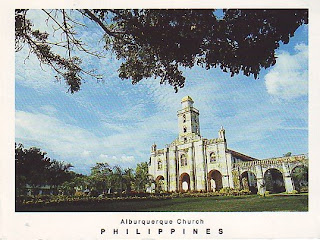The old town gate during the Spanish and American periods was known as the Puerta Real (Royal Gate) and the street passing through it, Calle Real (Royal Road). It was built in 1878-1880 by the Pagsanjeños using adobe, lime and carabao’s milk. On top of the triple arched gates is the Spanish Coat of arms guarded by two lions.
 Royal Gate at Pagsanjan Postcard
Royal Gate at Pagsanjan Postcard

































